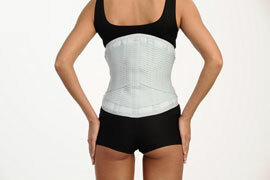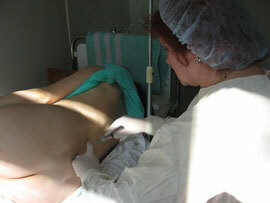In order to better understand the nature of this disease, it should be noted that the intervertebral disc is a cartilaginous body that connects the vertebrae to each other.
The intervertebral disc serves as a kind of shock absorber of the spine, which is achieved due to the presence in it of a low-compressible, gelatinous nucleus encased in a fibrous ring.
Causes of intervertebral hernia
Causes of rupture of the fibrous ring can be:
- hereditary predisposition;
- features of the structure of the spine;
- transferred infectious diseases;
- incorrect posture;
- osteochondrosis and some others.
In addition, the intervertebral hernia of the lumbar disc can be caused by:
- physical overload;
- with sharp movements;
- injuries and so on.
Older people lose the elasticity of the nucleus of the fibrous ring, which leads to a significant reduction in the number of diseases.
Intervertebral lumbar hernia is used to persecute people under 55 when the human body is most active.

There are four stages of clinical development of the intervertebral hernia:
- The first stage of is characterized by the appearance of the first cracks on the intervertebral disc and the formation of a 2-3 mm hernia;
- The second stage of is characterized by the appearance of protrusions( up to 15 mm).There is a disturbance of blood circulation and edema of the nerve root;
- The third stage of is characterized by the formation of osteitis, obstruction of blood circulation, partial atrophy of the nerve root. The core of the disk ceases to function as a shock absorber;
- The fourth stage of the disease results in complete atrophy of the surrounding tissue. The intervertebral disc is wrinkled and compacted. There is its calcification and ankylosing blockade( zero mobility of the lumbar region).
Intervertebral hernia in the sow location can be divided into:
- anterolateral;
- posterolateral;
- lateral;
- foraminous( median);
- combined.
Symptoms of the intervertebral hernia of the lumbar spine

Most often, intervertebral hernias can be observed in:
- full of people;
- men;
- people 30-50 years of age.
The main symptoms of this disease:
- pain;
- tingling;
- numbness;
- muscle weakness;
- slimming one leg or hand.
Over time, pain can only increase.
The dimensions of the hernia are considered large when it extends beyond the spinal canal.
Diagnosis of the intervertebral hernia is carried out after the approximate location of its location.
In this case, additional studies( selection methods) are used:
- CT( computer tomograph);
- MRI( magnetic resonance imaging);
- X-ray.
Treatment of the intervertebral hernia of the lumbar region
There are two methods of treating intervertebral hernia:
- is conservative;
- surgical.
Most often, treatment begins with the use of conservative methods, in which you can solve the main tasks:

- pain relief;
- decreased tissue edema;
- complete rehabilitation of the functions of the spine;
- sensitivity recovery in affected areas;
- recovery of muscle strength.
These methods of treatment involve the use of reflex methods:
- acupuncture;
- pharmacoapuncture;
- vacuum therapy and some others.
Operative methods are in demand when conservatives do not show their inefficiency.
Operation in vertebral hernia of the lumbar spine is performed to completely or partially remove the affected area of the intervertebral disc.
The best results can be achieved by using combined therapies:
- magnetopuncture;
- pharmacopuncture;
- moxa therapy;
- vacuum therapy;
- acupuncture;
- massage and others.
The full duration of treatment can range from two weeks to six months.
Consequences of intervertebral hernia
Consequences of herniated intervertebral disc can become:
- loss of control of pelvic organs;
- loss of ability to walk;
- lameness;
- restriction in movement.
As a result, a person has a disability.
Prophylaxis of intervertebral hernia
Prevention measures include:
- special exercises or physical education;
- maintaining good( correct) posture;
- normalization of body weight;
- complete quitting( smoking disrupts proper nutrition of intervertebral disc tissues).
Take care of yourself.
Stay healthy!
Video: Gymnastics with the intervertebral hernia of the lumbar region
 Intervertebral hernia of the lumbar spine or herniated intervertebral disc in the lumbar spine is a common disease caused by lesions of the fibrous ring of the intervertebral disc and extrusion of the nucleus.
Intervertebral hernia of the lumbar spine or herniated intervertebral disc in the lumbar spine is a common disease caused by lesions of the fibrous ring of the intervertebral disc and extrusion of the nucleus.


